Tags
Norfolk Heritage Centre, Norwich buildings, Paul Nurse, Pizza Express Norwich, The Forum Norwich
This week I was doing research on Colonel Unthank in Norwich Library’s Heritage Centre in The Forum – what a resource. And I came across something that I thought would make a quick post before tackling my namesake.
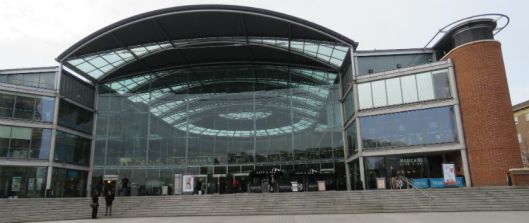
The Forum, Norwich
While eating a restorative pizza on the mezzanine I noticed the molecular models decorating the lampshades in Pizza Express (other pizza outlets are available).
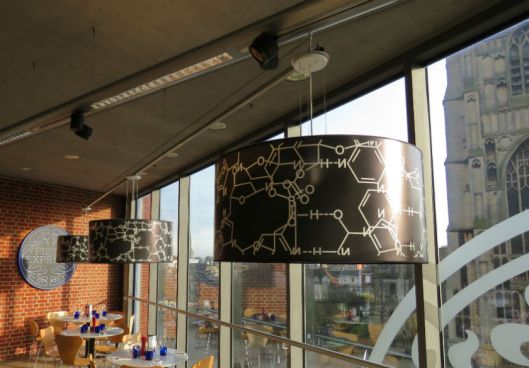
These molecular models represent the four DNA bases that make up the genetic code
Then, at the opposite end of the mezzanine I saw a photograph that explains the molecular theme.
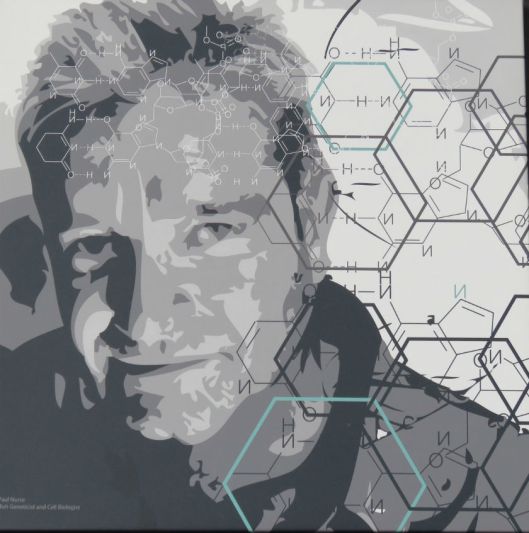
Sir Paul Nurse, Norwich-born Nobel Laureate
Apart from Norwich being Paul’s birthplace the connection must be about yeast and pizza dough, no?
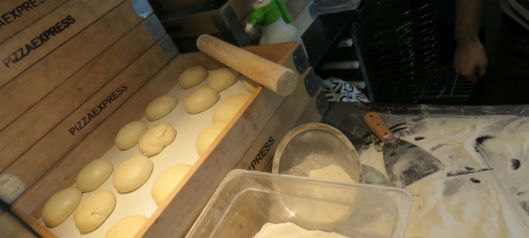
Baker’s yeast in action
The yeast used in pizza, and baking in general, is baker’s yeast. But Paul Nurse worked on a different kind of yeast, fission yeast, that divides in a slightly different way.

Baker’s yeast grows by protruding a bud
Normally, a freshly-divided cell must grow to (at least) double its birthweight before an internal regulator allows it to divide again (double-up/halve/double-up/halve etc etc). Otherwise the result would be smaller and smaller cells that eventually disappear down their own navels. Paul was working on a mutant fission yeast that did produce abnormally small cells. In the Scottish lab’ in which he worked these small cells were called wee (wee2).

Fission yeast divide in the middle instead of budding
Paul identified the gene responsible for the premature division in fission yeast. It turned out to be synonymous with a gene that Leland Hartwell in the USA had shown to control cell division in baker’s yeast. So, the two sorts of yeast may divide differently but they share the same mechanism for initiating division.
The third character in this story is Tim Hunt. Working on sea urchin eggs he saw that one particular protein accumulated steadily during the build-up to division but suddenly disappeared when all the cells divided. This cyclic protein – unsurprisingly called cyclin – turned out to bind to the regulatory protein identified by Nurse and Hartwell.
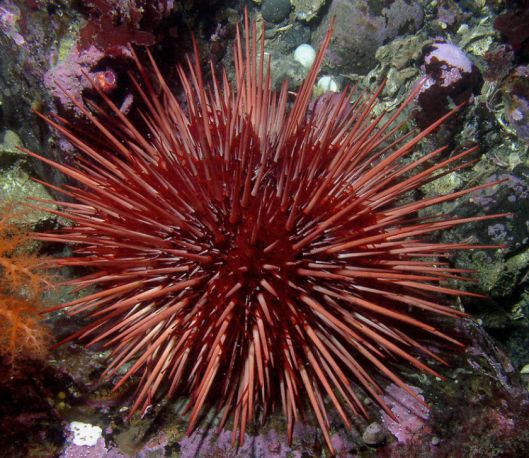
Sea urchin (Photo: Kirt L Onthank)
These two proteins form part of the complex that ‘tells’ a cell when it is ready to divide. This complex is found in all living things from yeast to man and when faulty plays a part in cancer.

Niçoise pizza on a gluten-free base
The 2001 Nobel Prize for Physiology or Medicine was shared three ways by Paul Nurse, Leland Hartwell and Tim Hunt.
Respect to Pizza Express for choosing such a brave theme

What an excellent new post, very accurate scientifically and also close to my heart as I know both Paul (who did his PhD on yeast at UEA) and Tim Hunt (who I knew from Cammbridge days and is still a colleague on The Problems Book that goes with the textbook Molecular Biology of the Cell). The real question is how and when the decision was made, and who by, to commission such an unlikely piece of public art. In fact it is not immediately obvious why the formal structure of DNA is particularly cell-cycle relevant/related, rather than, say, images of the yeast mutants or a sequence of mitotic figures or molecular models of the cyclin/Cdk complex.
I really enjoyed your other blogs too, particularly the sunflowers (some of which I am sure are chrysanthemums!?) and the stained glass detective story. I would love in the future to hear more about the wonderful Victorian stained glass in the Catholic Cathedral. It is at the top of Unthank Rd of course!
LikeLike
Thank you Keith for the supportive comments. Yes, the Pizza Express decorative theme may be left-field but how refreshing to tackle a scientific theme.
I am reasonably happy that all of Jeckyll’s cast-iron motifs are sunflowers but I do agree there is a problem when it comes to terracotta tiles. Clay may not be so amenable as metal for representing the fine details of the spirals at the centre of the sunflower and once you fudge those characteristic spirals the remaining whorls of petals tend to look like generic ‘sunthemums’.
Thanks for reminding me about the glass in St John’s; I’ll make a point of revisiting it.
LikeLike
Fascinating ! Is the sea urchin photographer a relative of Reggie’s?
LikeLike
Yes, isn’t that interesting? The photographer’s name is Onthank. I shall be writing on the derivation of the name Unthank in my next post.
LikeLike